1. Many researchers believe that the history of Vietnam is the history of wars. As a destiny and fate of history, in the long process of its development, the Vietnamese people have had to constantly confront wars of invasion, with great empires. In the work "Unity in diversity of Vietnamese history”, History professor Phan Huy Le once concluded: Not to mention the resistance wars against invasion during the Hung King period reflected in legends, just from the resistance war against the Qin Dynasty in the 3rd century BC to 1975, the Vietnamese people had to wage 15 wars to defend the Fatherland. Of these, 12 resistance wars were victorious and 3 were defeated. Those unsuccessful resistance wars led to many serious consequences for Vietnamese history, culture and society.[1].
From that summary, we see that the resistance against the invaders Trieu Da failed in 179 BC, leading to the disaster of 1,000 years of Chinese domination and it was not until 938 that independence was achieved after the Bach Dang victory led by Ngo Quyen. The resistance against the Ming in 1406-1407 of the Ho Dynasty failed, leading to two decades of Ming domination (1407-1427), the resistance against the French of the Nguyen Dynasty (1802-1945) and the Can Vuong movement (1885-1896) failed, causing the Vietnamese people to suffer the yoke of French colonialism for more than 80 years (1858-1945). Those are tragic and dark pages in Vietnamese history!
It is worth noting that, during the period of occupation, despite being exploited, suppressed, suffering many losses and sacrifices, the Vietnamese people never gave in. They constantly stood up to fight persistently and heroically to regain independence and freedom. In total, the Vietnamese people carried out more than 200 uprisings and wars of national liberation. The period of resistance against foreign invaders was up to 12 centuries, accounting for more than half of the historical period. There was almost no century in which Vietnam did not have to fight against invaders. There were times like the 13th century, within 30 years (1258-1288), the army and people of Dai Viet under the leadership of the Tran Dynasty had to fight three times against the expansionist and invasive ambitions of the Mongol-Nguyen empire, the most powerful empire in the world at that time.[2]In the 18th century, for 5 years (1784-1789), the Vietnamese people also had to simultaneously fight against the Qing in the North and against Siam in the South.[3]. In general, in those wars to defend the Fatherland, the invading armies were often many times stronger. Many wars also clearly demonstrated the goal of annexation and destruction, the most specific manifestation of which was the plot to assimilate and destroy cultural heritages. It can be said that in the history of Asian nations, there are few countries that have had to bear such fierce challenges related to the survival of the nation as Vietnam. In order to survive, develop and to be strong enough to fight against foreign invaders, the Vietnamese people had to unite into a unified bloc, uphold patriotism and the awareness of protecting their territorial sovereignty and cultural identity.[4].
Obviously, the history of Vietnam cannot only be the history of wars but also the history of cultural creations; of economic relations and activities; of social classes with the elite and even the most ordinary people who have contributed to making history; of political and legal institutions; of ideological trends and movements; of religious sects and beliefs; of international and regional relations.[5]... However, war has become a constant danger and can even be considered a "typical characteristic" of Vietnamese history. That characteristic has had a profound impact on the psychological life, cultural behavior, and development policies of Vietnam, not only before and during the wars, but also left long-term consequences in the thinking of a nation in the post-war period.

President Ho Chi Minh - national liberation hero, outstanding cultural figure of the Vietnamese people
2. In my personal opinion, in the ups and downs of Vietnamese history, the 20th century is the century in which the Vietnamese people had to face the most severe and fierce challenges. In the first half of this century, Vietnam had to concentrate all its strength to fight against the domination of French colonialism.[6]. Vietnam won the war of national defense in the context of the Second World War coming to an end, creating many favorable conditions for the Vietnamese revolution. However, in Asia, the Pacific War had a strong impact on regional political life. In fact, the August Revolution in 1945 was not only the end of 8 decades of French colonial rule but also the end of the presence of the Japanese army in Vietnam.[7]. But, in the complex international conditions of that time, hiding under the name of the allied forces, the French army returned to Indochina, followed by the British army and Chiang Kai-shek's forces. With the spirit of "Nothing is more precious than independence and freedom" declared by President Ho Chi Minh in the documentDeclaration of IndependenceOn September 2, 1945, the entire Vietnamese people rose up against the invaders.[8]In that sacred and noble revolutionary cause, the role of an outstanding leader emerged: President Ho Chi Minh.The name of President Ho Chi Minh is associated with the most important events in the history of the heroic struggle of the Vietnamese people for freedom and independence. This struggle is an invaluable contribution to the national liberation movement and the world revolutionary process, to the consolidation of the forces of peace, democracy and social progress on our planet... Under the flag of President Ho Chi Minh, the Vietnamese people successfully carried out the August Revolution in 1945, dealing a fatal blow to the colonial system of imperialism in Asia. Under the flag of President Ho Chi Minh, the Vietnamese people established the first workers' and peasants' state in Southeast Asia - the Democratic Republic of Vietnam and defended that state during the 9-year resistance war against French colonialism.”[9].
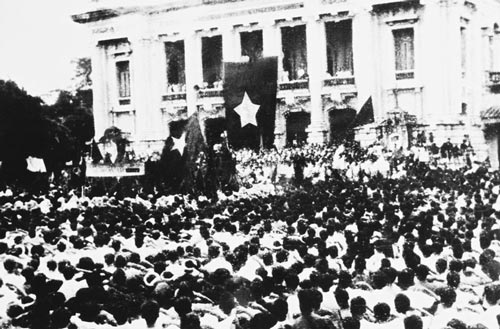
President Ho Chi Minh read the Declaration of Independence giving birth to the Democratic Republic of Vietnam in 1945.
During the period 1946-1954, in parallel with the armed struggle, the Ho Chi Minh government also implemented brave and clever foreign policies to gain international support and recognition. Finally, after 9 years of continuous fighting, with the victory of Dien Bien Phu in 1954, Vietnam restored independence to half of the country.[10].
According to the Geneva Agreement, the 17th parallel with the Ben Hai River was established as the temporary dividing line between the North and South.[11]. And the resistance war of the Vietnamese people against the invasion of the US and its vassal states had to last 21 years (1954-1975) before it could achieve final victory. However, after that, conflicts and border wars took place, causing many losses to the Vietnamese people. The country went through extremely difficult days in both political, economic and diplomatic aspects, cultural development and maintaining social stability.
Thus, it can be seen that, like the 13th century, the 20th century was a century in which the Vietnamese people had to face many harsh political challenges. The survival of the nation was seriously threatened. There had never been a century in which so many foreign invaders appeared simultaneously on Vietnamese territory. And there had never been a century in which the Vietnamese country had to suffer so many sacrifices and losses! However, Vietnam stood firm, gradually recovered and developed after the wars. It was a great revival of a nation with strong cultural vitality. In some aspects, the war had forged the character, fostered patriotism, and the desire for peace for each citizen and the entire Vietnamese nation.
War is the most fierce and comprehensive challenge to the vitality of a nation. To fight and defeat the enemy, the Vietnamese people had to mobilize all human and material resources, and concentrate the highest efforts of the country and the people. People often call it the "war"People's War”[12], a sacred war to protect the most sacred values. That war was created by the combined strength in which patriotism, the consciousness of protecting national independence, protecting traditions and cultural roots were promoted more than ever.[13]And it is these factors that have created unity, solidarity and great strength for the Vietnamese people.
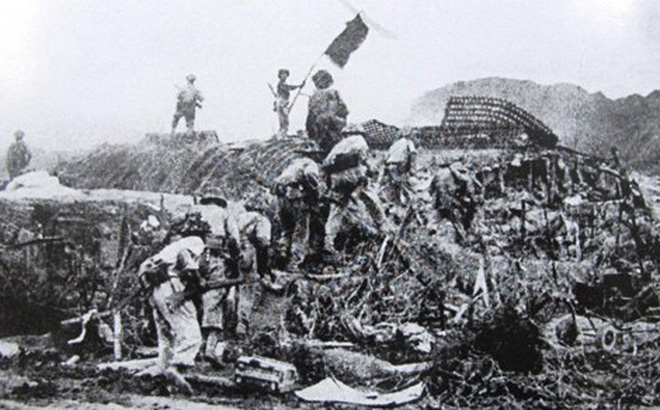
The Dien Bien Phu victory shook the world in 1954
3. After the fierce challenges of the wars passed, by the 1980s, the domestic and international situation had fundamental changes. Realizing that it was impossible to continue maintaining the management policies and thinking, the "traditional" foreign views of the Cold War era, Vietnam carried out the Doi Moi process since 1986, the first point of which was to abolish the subsidized bureaucratic mechanism and implement a socialist-oriented market economy policy. As an agricultural country, Vietnam also implemented many innovation policies to pave the way for the development of economic, scientific and technological, educational, and cultural sectors.[14]. As a result, after a short time, from a place of food shortage and constant hunger, Vietnam was able to fundamentally solve the food problem and become one of the major rice exporting countries in the world. Along with crude oil and other agricultural products, rice has become an important export commodity, bringing foreign currency for socio-economic development, stabilizing the lives of more than 80% of the population living in rural areas and contributing to the construction of a number of new industries and businesses in Vietnam.[15].
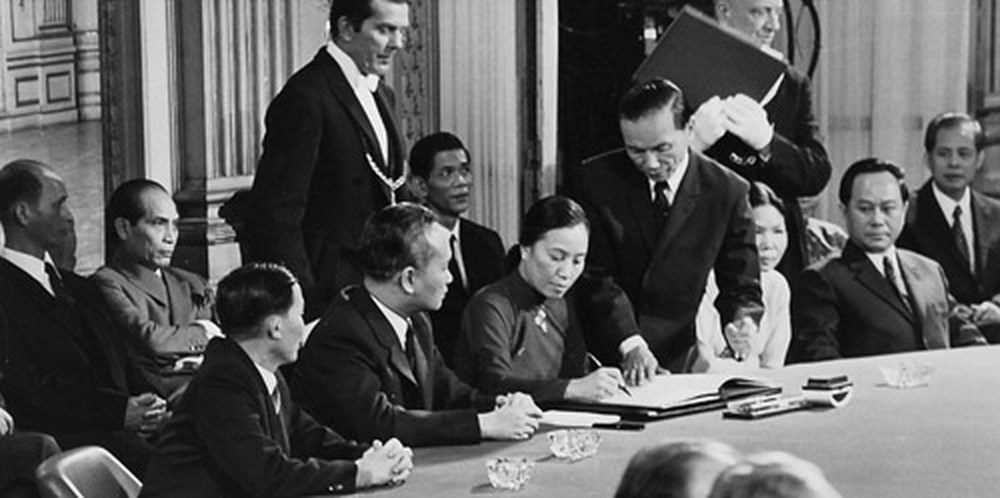
1973 Paris Agreement on Ending the War and Restoring Peace in Vietnam
But the important thing is that, after implementing the renovation policy, Vietnam's perception of the world situation and power also had important changes. In about 10 years (1986-1995), Vietnam made many outstanding efforts to fundamentally resolve existing problems in international relations. With the motto "Want to be friends with all countries”[16]Vietnam has sent a message of peace, expressing its goodwill to build, consolidate and develop friendly and cooperative relations with other nations and write a new page in international relations. That peaceful foreign policy has raised Vietnam's position in the international arena. By implementing an increasingly open foreign policy, regional and world countries have also understood Vietnam better and more correctly. Entering the 90s, together with the joint efforts of the international community, Vietnam has successfully resolved the Cambodia issue, continued to consolidate the special friendship with Laos, gradually improved relations with ASEAN countries and, importantly, has achieved many important steps in normalizing relations with China and improving relations with the United States.[17]. With China, after many efforts, in March 1991, Chinese Prime Minister Li Peng declared that "Vietnam-China relations have thawed". By November 1991, the leaders of the two countries officially announced the normalization of relations. For the countries in the Northeast Asia region, Vietnam continued to strengthen its special relationship with Japan and in 1992 officially established state-level diplomatic relations with South Korea.[18].
In the historical journey since the implementation of the Doi Moi policy, there were two important moments: 1995 and 2006. The year 1995 can be considered the year of many important turning points in Vietnam's foreign relations. Some commentators believe that it was a year of great victory for Vietnam in terms of foreign affairs. That year, on July 28, 1995, Vietnam officially became the seventh member of ASEAN. Also in this year, after the order to lift the embargo against Vietnam issued on February 3, 1994, on July 11, 1995, US President Bill Clinton officially announced the normalization of relations with Vietnam. With those important diplomatic victories, a period of Vietnam's isolation and blockade in international relations ended. In fact, Vietnam had more favorable opportunities to integrate with the common developments of the region and the world.
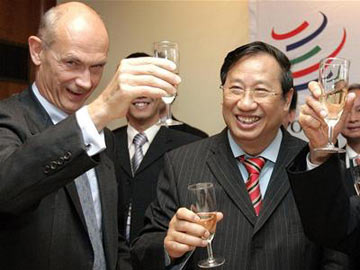
WTO Director General Pascal Lamy and Deputy Prime Minister Pham Gia Khiem raise their glasses to celebrate Vietnam's official accession to the WTO in 2006 - Photo: AFP
More than a decade later, in 2006, Vietnam continued to gain two more important diplomatic victories: becoming an official member of the World Trade Organization (WTO) and successfully organizing the APEC Conference in Hanoi. During this year, Vietnam-Japan relations were elevated to a strategic level. Relations with China and the United States also saw many important improvements. With China, the two countries resolved two of the three fundamental problems in bilateral relations.[19]. A new wave of investment is pouring into Vietnam. Vietnam has become an attractive investment environment for large international economic, banking and financial corporations.
From the above reconstruction of the historical picture and process, some comments and interpretations can be drawn:
1. Vietnam's position and the annexation plot of international powers
In fact, to thoroughly answer the question of Vietnam's strategic position through historical periods is not an easy task. However, with its potential and rich tropical resources, favorable ports for the development of trade relations and the labor force of its residents, it can be seen that on the regional and world map, Vietnam's territory has an important position.
Stretching along the Indochina peninsula, with a coastline of 3,260 km, Vietnam is located at the intersection between mainland Southeast Asia and island Southeast Asia, between Northeast Asia and Southeast Asia... Vietnam is the destination of many migrations, the intersection of many cultures in the Southeast Asian region as well as between Southeast Asia and China and India. As many researchers have pointed out, historically, if the influence of India was transmitted to Southeast Asia through religion and peace, then the peoples in the region, especially the countries sharing land borders and important maritime trade positions, were subject to frequent and strong political and military pressure from the North.
As a small country with a deep national consciousness existing next to a large empire, among the Southeast Asian countries, Vietnam is the first country and always has to bear strong pressure from the North not only when those dynasties were strong but also when the central position of power changed and declined. In the process of expanding influence to the South, Vietnam was the country holding the gateway position on the way to Southeast Asia of the Northern empires because of the convenience of both land and sea transportation. Similarly, in the modern era, Western powers, from the southern sea, wanting to penetrate the Indochina peninsula and the large market area of Southern China, also considered Vietnam an important target to conquer. Objectively speaking, that strategic location is an extremely favorable basis for Vietnam to develop its economy and expand cultural exchanges in peaceful conditions, but it also easily turns Vietnam into a target and a place for historical clashes and wars of invasion by foreign powers.[20].
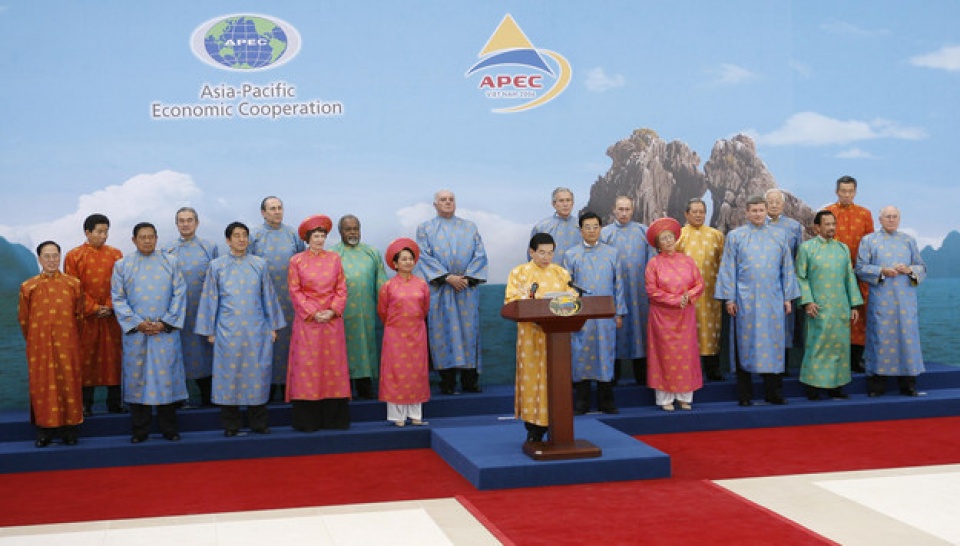
Vietnam successfully organized the APEC Summit 2017 in Da Nang
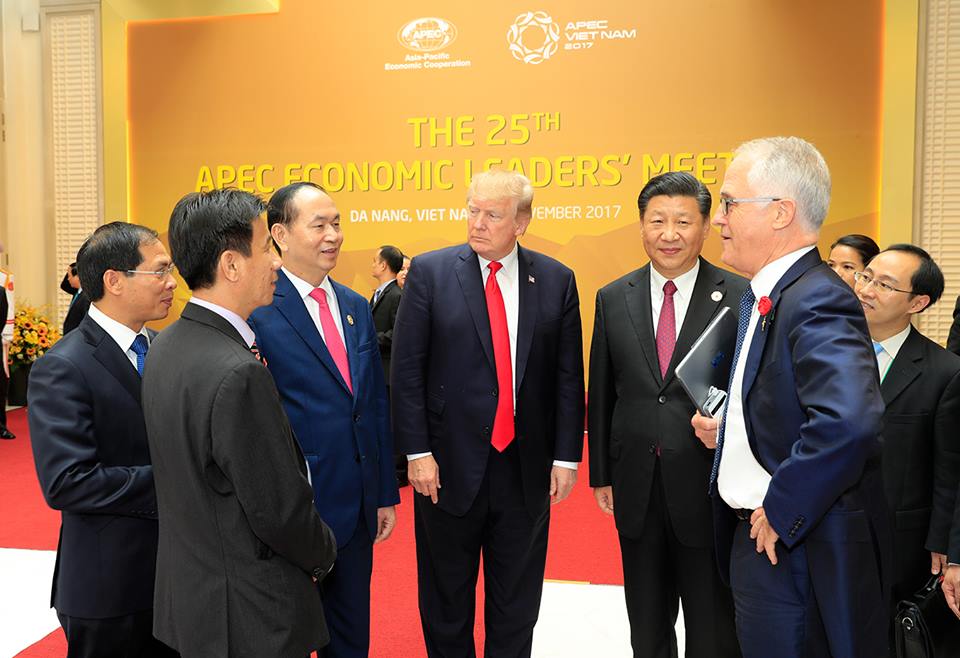
World leaders at APEC 2017
2. About the origin and strong vitality of the Vietnamese people
As presented above, if we count from the invasion of the Qin Dynasty in the 3rd century BC to 1975, within 22 centuries, Vietnam had to conduct 15 resistance wars to defend the country and the time to fight against foreign invaders was up to 12 centuries.[21]. It can be seen that, as a nation formed early in Southeast Asia, the residents of the Van Lang and Au Lac states soon had awareness of their own distinct culture and territorial sovereignty. During the 1,000 years of Chinese domination, along with the process of "Sinicization"is a process of cultural self-defense"de-sinicization”. Some authors argue that the process of “Sinicization"only occurred strongly among some upper social classes and concentrated in the Northeast region. The density of the system of Han tombs and Han-style tombs in this area partly proves that point of view. In that sense, despite dominating Vietnam for a relatively long time, in general, the influence of Chinese culture could not reach too far beyond the Red River Delta and some areas that had indigenous cultural layers and were heavily influenced by Southeast Asian culture. However, over time, through many different paths and methods, that culture has had certain permeations into cultural life and some social classes. During a thousand years of Chinese domination, it is difficult to imagine that Chinese culture could not penetrate through the bamboo fences of villages. In fact, some cultural elements, customs, and practices from outside have been linked and become a part of Vietnamese culture, especially with the upper social classes.
Besides, it must also be seen that, in the villages and remote areas, the traditional cultural elements of ancient Vietnam, which are close and have the same foundation as Southeast Asian culture, are still preserved as a stable nuclear structure. The key point is that, although the pressure of Chinese culture is very strong and the influence of this culture is continuous, it has not been able to degrade or destroy the traditional structure. The deep awareness of origin, of territorial sovereignty and a unique cultural tradition is the endogenous strength, the fundamental factor to both localize and preserve that structure. That structure is also preserved in the close relationship between village members, in habits, cultural activities and common sense, deep sense of community. That consciousness is the sacred link between social members and can become the factor of aggregation, the driving force to transform intoNationalism,Patriotismand that patriotism is always multiplied when national interests and sovereignty are threatened.
Moreover, if we look at the process of cultural exchange from the perspective of cultural analysis and cross-section, we can see that the Chinese influences on Vietnam can be divided into three basic types or circles. First, there are the influences of Chinese culture that spread to Southeast Asia in general and Vietnam in particular from the South China region. Next, there are the influences from the North China region. And, finally, there are the influences from the North China but have been "Southernization”. In that sense, the first cultural circle is both very close to and a part of Southern culture in the broad sense. This cultural circle, when penetrating Vietnamese society, generally did not cause strong reactions.
Importantly, while resolutely fighting to protect political independence, in terms of culture, Vietnam did not reject foreign cultural heritages. With the viewpoint of "No Chinese, no different from China” (No less than China, no different from China) generations of Vietnamese people have found in the treasure trove of regional cultural heritage the capacity for creative development and are ready to accept those heritages to not only supplement but also strengthen their necessary resistance. In fact, in the Vietnamese cultural tradition from political institutions, laws, writing, education... there are many Northern cultural imprints. In the workSome thoughts on Vietnamese history and Vietnamese ideology, Professor Ha Van Tan once commented that: "In the history of Vietnamese thought, there is often the need to hone existing ideological weapons to suit Vietnam's needs, of which the greatest and most urgent need is to preserve the nation's survival."[22].
It is also necessary to add that that cultural strength is also the reception of the influences of Indian culture, especially the humanistic thoughts and views of Buddhism.[23]. On the basis of indigenous culture and a deep sense of national sovereignty, Vietnamese culture has absorbed many elements and parts of Chinese and Indian civilizations, and from the 16th to 17th centuries, the influences of Western culture to supplement and strengthen its core values and traditional cultural structure.[24]. It can be said that Vietnamese culture found its endogenous capacity and strong vitality in the process of fighting for national independence and really started after 10 centuries of being controlled by the North. That explains why, just a short time after gaining independence, with the belief in the nation's longevity, with its new position, vision and vitality, Dai Viet became a regional power and was strong enough to cope with the wars of invasion by powerful forces from Asia as well as Europe.
3. Vietnam - Dynamic country
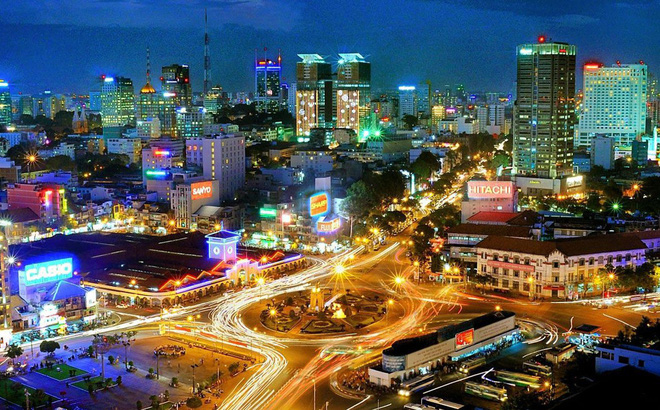
Vietnam is a dynamic economy in the region.
Some researchers believe that Vietnam is an agricultural country, Vietnamese culture is an agricultural culture. Agriculture is the characteristic and identity of Vietnamese - Southeast Asian culture. But, as we all know, Southeast Asia is not a homogeneous region or center of civilization.[25]. Each culture of the ethnic groups in the region is a continuation and integration by the interweaving of different traditions. In that context, Vietnamese culture is also a unified culture in diversity. The process of territorial expansion and the exploration of the Southern land of the Vietnamese people has gradually converged into a multi-faceted cultural tradition of the regions with three basic foundations: Dong Son culture in the North, Sa Huynh in the Central region and Oc Eo - Phu Nam in the South of Vietnam. The natural conditions of being located on a peninsula and being a country with a high coastal index are also one of the reasons for the dynamic development in the development tradition of the Vietnamese people.[26].
Moreover, due to the characteristics of a polytheistic nation, and the acceptance of cultural elements of some great Eastern civilizations, when new cultural and religious elements penetrated Vietnamese society, the indigenous culture could naturally accept them and no major, fierce cultural conflicts occurred. Cultural tolerance and the spirit of turning that tolerant thought into a mindset of action in cultural behavior are among the common, precious values of Eastern civilization and Vietnamese culture.
And people are also talking a lot about Asian values; of Buddhist and Confucian thought; of relationships, community organization; of order and close attachment between family members... for the future development of humanity.
Many cultural researchers believe that, in the traditional Vietnamese cultural element, the Vietnamese are sentimental, even sentimental people. I think that is true but not enough. The Vietnamese are also rich in practical thinking. They value practical values. With their thinking and reason, they have organized social forces to build large-scale irrigation systems. The Vietnamese have also organized many battles of strategic significance with high military art and won historic victories. Also with practical thinking, the Vietnamese have known how to abandon old institutions, methods, and policies of economic and social management to resolutely implement the Doi Moi policy. With practical thinking, they have also known how to change the "traditional" foreign policy, shifting from unipolarity to multipolarity, multilateralizing international relations to share benefits and keep pace with the progress of humanity. Vietnam has successfully resolved many complicated relationships and has moved from confrontation to dialogue for the prosperity and development of the region.[27]In the trend of dialogue and cooperation, Vietnam has proactively closed many painful pages of the past to look towards the future and not to once again miss great opportunities for the development of the nation, for the goals of promoting regional and international relations and cooperation.
In fact, Vietnam's Doi Moi is not an adjustment or change of some specific policies but rathera comprehensive innovation processhas a turning point meaning in determining a new path for the nation. That path is consistent with the country's aspirations to rise, with historical reality and the new international context. A new development model towards integration is being established in Vietnam.[28].
A confident, dynamic and creative Vietnam is truly integrating with the rapid developments of human civilization in the new era and hopes to make positive contributions to strengthening cooperative relationships for the prosperity of the East Asia region and the world in the 21st century.
[1]Phan Huy Le:Unity in diversity of Vietnamese history, in: Searching for the origin, Volume 1, The Gioi Publishing House, H., 1998, p.495.
[2]Ha Van Tan - Pham Thi Tam:The resistance against the Yuan-Mongol invasion in the 13th century, Social Sciences Publishing House, H., 1970.
[3]Phan Huy Le - Bui Dang Dung - Phan Dai Doan - Pham Thi Tam - Tran Ba Chi:Some strategic battles in national history, People's Army Publishing House, H., 2004.
[4]Phan Huy Le:Vietnamese History and Culture - Partial Approach, World Publishing House, H., 2012; Vu Minh Giang:Traditional and modern Vietnamese history, Education Publishing House, H., 2009.
[5]Nguyen Van Kim - Pham Hong Tung:Vietnamese History and Culture - Multidimensional, Interdisciplinary Approach, Publishing House. Hanoi National University, H., 2017.
[6]Dinh Xuan Lam:Anti-colonialism movement in Vietnam, Education Publishing House, H., 2015; Nguyen Manh Dung:The process of French invasion into Vietnam from the late 17th century to the mid-19th century - Causes and consequences, Publishing House. Hanoi National University, H., 2016.
[7]During the occupation of Vietnam (1940-1945), along with military actions, the economic policy of the Japanese military occupation force is also considered one of the main causes leading to the disaster that caused more than 2 million people to starve to death. See Van Tao - Furuta Motoo:The 1945 Famine in Vietnam - Historical Evidence, Knowledge Publishing House, H., 2011.
[8]Pham Hong Tung:History of the August Revolution of 1945 in Vietnam, Publishing House of Hanoi National University, H., 2013; Many authors:Ho Chi Minh - An Asian of all time, National Political Publishing House, H., 2010.
[9] Statement of the International Conference “Vietnam and the World” commemorating the 90th anniversary of President Ho Chi Minh's birth, in: Vietnam and the world, Truth Publishing House, H., 1981, pp.202-212.
[10]JC Rome:1954 - A year of change; in University of Social Sciences and Humanities, VNU Hanoi: Dien Bien Phu from the perspective of Vietnamese and French scientists, National Political Publishing House, Hanoi, 2005, pp. 20-26.
[11]In the complex international conditions at that time, Vietnam could not be completely proactive in making diplomatic decisions. In fact, the agreement was an arrangement of interests to achieve a balance of power among major countries. In Vietnamese history, with the signing of the Geneva Agreement, Vietnam's territory was divided for the second time (21 years), after the first division that took place during the Trinh - Nguyen conflict that lasted 114 years (1672-1786). See Mitchell K. Hall:Because of Their Faith - Calcav and Religious Opposition to the Vietnam War, Columbia University Press, 1990; Larry Berman:No Peace, No Honor - Nixon, Kissinger, and Betrayal in Vietnam, Library of Congress Cataloging-in-Publication Data, America, 2002; Pierre Asselin:A Bitter Peace – Washington, Hanoi, and the Making of the Paris Agreement, The University of North Carolina Press, 2002.
[12]The basic content and spirit of this concept were first put forward by President Ho Chi Minh in his Call for National Resistance in December 1946. Later, General Vo Nguyen Giap continued to develop the ideology and complete the theory of this concept.
[13]The national spirit and deep awareness of national independence and unity, according to Vietnamese historians, are very typically expressed in the work.Proclamation to the soldiersof Tran Hung Dao (1226-1300),Proclamation of Victory over the Wuof World Cultural Celebrity Nguyen Trai (1380-1442) andDeclaration of IndependencePresident Ho Chi Minh (1890-1969) excellently inherited a number of ideas expressed inDeclaration of Independenceof America in 1776 andDeclaration of the Rights of Man and of the Citizenof the French Revolution of 1791.
[14]Dang Phong:“Breaking Barriers” in Economics on the Eve of Innovation, Knowledge Publishing House, H., 2009; Dang Phong:Vietnamese economic thinking 1975-1989, Knowledge Publishing House, H., 2009; Vu Cao Dam:Paradox and the way out - Discussing the philosophy of developing science and education in Vietnam, World Publishing House, H., 2014.
[15]Vietnam's food production has steadily increased from 17.5 million tons in 1987 to 34.3 million tons in 1999, doubling in 13 years. From an average of 1 million tons of food imported each year, in 1989 Vietnam began exporting 1.4 million tons of rice and by 1999 it had increased to 4.5 million tons, ranking second in the world in rice exports, after Thailand. See Pham Xuan Nam:Socio-economic innovation in Vietnam (1986-2000) - An overview; in: Vietnam in the 20th century, Volume I, National Political Publishing House, Hanoi, 2001, p. 237.
[16]This important foreign policy guideline was put forward at the 7th Congress of the Communist Party of Vietnam in June 1991. The full text of the statement is as follows: “With an open foreign policy, we declare that: Vietnam wants to be friends with all countries in the world community, striving for peace, independence and development.”.
[17]By the end of 1989, Vietnam had withdrawn all its troops and experts from Cambodia. In the face of the general détente trend, the US also adjusted its policy towards Indochina, ending its support for the Cambodian coalition government and starting negotiations with Vietnam on normalizing US-Vietnam relations. See Nguyen Dinh Bin (Cb.):Vietnamese diplomacy 1945-2000, National Political Publishing House, H., 2005, p. 334.
[18]Vietnam-Japan friendship relations were officially established on September 21, 1973, just eight months after the Paris Agreement on ending the US war in Vietnam was signed (January 27, 1973). See Shiraishi Masaya:Japan - Vietnam Relations 1951-1987, Social Sciences Publishing House, H., 1994, pp. 89-95. Although the Vietnam - Korea relationship was established relatively late, according to observers, the development speed of this relationship is extremely fast and has many prospects in the future due to the cultural similarities between the two countries and the favorable investment environment with great potential of Vietnam.
[19]Along with signingLand Border AgreementOn December 30, 1999 and December 25, 2000, the governments of Vietnam and China also signedAgreement on the delimitation of the Gulf of TonkinandAgreement on Fisheries CooperationThus, according to the assessment, Vietnam has completely resolved two out of three remaining territorial border issues with China including: Land border, Gulf of Tonkin delimitation and East Sea issue.
[20]Robert D. Kaplan:Suhbrightgeographical definition(Translated by Dao Dinh Bac), Writers Association Publishing House, Hanoi, 2017, pp.72-74.
[21]Phan Huy Le:The process of formation and development of the Vietnamese people; in: Searching for the origin, The Gioi Publishing House, H., 1998, p.465.
[22]Ha Van Tan:Some thoughts on Vietnamese history and Vietnamese ideology; in: Coming to Vietnamese cultural history, Publishing House of Writers Association, H., 2005, p.50.
[23]Tran Van Giau:Traditional spiritual values of the Vietnamese people, National Political Publishing House, H., 2011, pp.121-125.
[24]Phan Huy Le:Cultural contact with France and the West in the process of modernization in Vietnam, in: Vietnamese History and Culture - Partial Approach, World Publishing House, H., 2012, pp.1004-1016; Trinh Van Thao:Three generations of Vietnamese intellectuals (1862-1954), World Publishing House, 2013; Nguyen Van Khanh (Cb.):Vietnam's Intellectual Resources: History, Current Status and Prospects, National Political Publishing House, H., 2012.
[25]Tadao Umesao: An Ecological View of History - Japanese Civilization in the World Context, Trans Pacific Press, Melbourne, 2003; Arnold Toynbee: A Study of History - A New Edition Revised and Abridged, 1972.
[26]Keith Weller Taylor can be seen at:The Birth of Vietnam, University of California Press, 1983, p.7 and profound analysis by Professor Tran Quoc Vuong on the adaptability of factorsWatersuch as project:A characteristic of Vietnamese culture: The ability to adapt; in: Vietnamese culture: research and reflection, National Culture Publishing House, Hanoi, 2000, pp.41-49.
[27]University of Social Sciences and Humanities, VNU:Vietnam in the process of national unification, innovation and integration, Publishing House of National University of Hanoi, H., 2005; Vu Duong Ninh (Cb.):Vietnam in a changing world, Publishing House. Hanoi National University, H., 2017; Nguyen Quoc Hung:With the 20th century, World Publishing House, H., 2016.
[28]Phung Huu Phu - Le Huu Nghia - Vu Van Hien - Nguyen Viet Thong (Co-Cb.):Some theoretical and practical issues on socialism and the path to socialism in Vietnam over 30 years of renovation, National Political Publishing House, H., 2016.
Author:Prof. Dr. Nguyen Van Kim (Party Secretary, Vice Rector of University of Social Sciences and Humanities)
Newer news
Older news